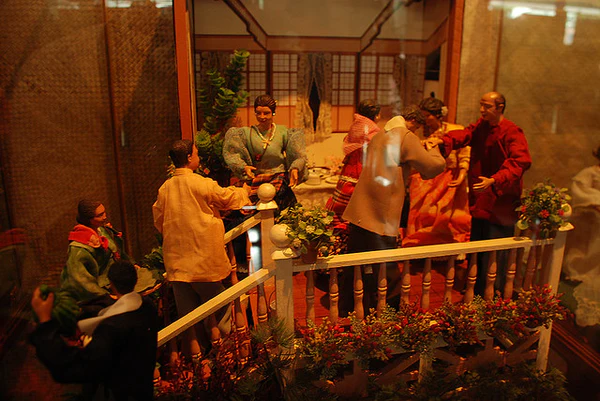
Pamamanhikan is a Filipino tradition where the groom’s family visits the bride’s family to formally ask for her hand in marriage. It’s an essential part of Filipino culture and is a sign of respect for the bride’s family. In this article, we’ll discuss everything you need to know about Pamamanhikan, from the traditions to the planning tips and etiquette.
Pamamanhikan is an important pre-wedding tradition in Filipino culture that involves a formal meeting between the families of the bride and groom. It serves as an opportunity for the families to get to know each other and discuss the wedding plans, as well as to show respect for their elders and seek their blessings. In this article, we will explore everything you need to know about Pamamanhikan, its history, how it works, and its benefits. We will also provide some tips on how to prepare for a successful Pamamanhikan meeting.
I – History of Pamamanhikan
Pamamanhikan has been a part of Filipino culture for centuries, dating back to the pre-colonial era. It is said to have originated from the Tagalog word “manhikan” which means “to ask for someone’s hand in marriage”. In the past, it was a practice for the groom to formally ask the bride’s parents for their daughter’s hand in marriage.
Over time, Pamamanhikan evolved into a more formal and elaborate affair, with both families gathering together for a formal meeting. The groom’s family traditionally takes the lead in organizing the Pamamanhikan, but the bride’s family also plays an important role in the preparation and execution of the event.
Pamamanhikan has remained a significant tradition in Filipino culture, with many families still adhering to its customs and practices to this day. It is seen as a way of showing respect to the elders and strengthening family ties, as well as a means of ensuring that the couple’s marriage is blessed and supported by both families.
II – How Pamamanhikan Works
Pamamanhikan usually takes place several months before the wedding day, giving the families enough time to get to know each other and to finalize the wedding plans. The event can be held at the home of either the bride or the groom, or at a neutral location such as a restaurant or hotel.
During the meeting, both families sit down together to discuss various aspects of the wedding, such as the date, time, venue, guest list, and budget. It is also an opportunity for the groom’s family to formally ask the bride’s parents for their daughter’s hand in marriage, and for the bride’s family to give their blessings.
In addition to the wedding planning, Pamamanhikan is also a time for the families to get to know each other better. They can share stories, exchange gifts, and enjoy a meal together. It is important to show respect for each other’s customs and traditions, and to create a welcoming and harmonious atmosphere.
After the Pamamanhikan, both families will continue to communicate and work together in preparation for the wedding day. The groom’s family may also give the bride’s family a token of appreciation or “pasalubong” as a sign of gratitude and respect.
III – Preparing for Pamamanhikan
Preparing for Pamamanhikan can be a significant undertaking, as it involves not just the couple but their families as well. Here are some things to consider when preparing for Pamamanhikan:
1. Discuss with your partner
Before arranging for Pamamanhikan, it is important for the couple to discuss the details and expectations of the event. Make sure you are both on the same page about the timing, location, and format of the meeting.
2. Coordinate with both families
The groom’s family traditionally takes the lead in organizing the Pamamanhikan, but it is important to involve both families in the planning process. Discuss the guest list, menu, and other details with both sides to ensure that everyone is comfortable and happy with the arrangements.
3. Choose a location
Pamamanhikan can be held at the home of either the bride or the groom, or at a neutral location such as a restaurant or hotel. Consider factors such as convenience, comfort, and budget when selecting a venue.
4. Prepare a menu
Food is an important part of Filipino culture, and Pamamanhikan is no exception. Prepare a menu that includes a mix of traditional Filipino dishes and other options to accommodate different tastes and dietary restrictions.
5. Choose attire
Pamamanhikan is a formal event, so dress appropriately. The groom should wear a barong Tagalog or a suit, while the bride can opt for a traditional Filipiniana dress or a modern outfit.
6. Bring gifts
It is customary to bring gifts for the bride’s family during Pamamanhikan. Consider bringing items such as flowers, food, or other tokens of appreciation.
By carefully planning and coordinating with both families, Pamamanhikan can be a meaningful and memorable event that sets the stage for a successful wedding day.
IV – Pamamanhikan Planning Tips
1. Choosing the right time and location
- Consider the availability and convenience of both families.
- Choose a venue that is comfortable, convenient, and fits your budget.
- Determine the time that works best for everyone.
2. Inviting the Right People
- Invite the immediate family members of both sides.
- Consider inviting close friends or relatives who are important to both families.
- Make sure to confirm the attendance of the guests before the Pamamanhikan.
3. Setting the right tone
- Pamamanhikan is a formal event, so make sure to keep the conversation respectful and polite.
- Prepare topics to discuss to avoid awkward silences.
- Try to make the atmosphere warm and welcoming.
V – Pamamanhikan Etiquette
1. What to wear
- The groom should wear a barong Tagalog or a suit, while the bride can opt for a traditional Filipiniana dress or a modern outfit.
- Avoid wearing revealing or inappropriate clothing.
2. What to bring
- It is customary to bring gifts for the bride’s family during Pamamanhikan.
- Consider bringing items such as flowers, food, or other tokens of appreciation.
3. Proper behavior during the Pamamanhikan
- Show respect to the elders by greeting them properly.
- Listen attentively and avoid interrupting when someone is speaking.
- Be polite and mindful of your actions.
VI – Pamamanhikan FAQs
1. What if the parents do not approve of the engagement?
- It is important to respect the decision of the parents and try to address their concerns.
- Discuss with your partner the issues raised by the parents and find ways to address them.
2. What if the couple is not ready for marriage yet?
- Pamamanhikan is not a requirement for marriage, but it is a tradition that symbolizes the intention of the couple to get married.
- If the couple is not yet ready for marriage, they can discuss this with both families and come up with a plan that works for everyone.
3. What gifts are appropriate for the parents during the Pamamanhikan?
- Gifts that are thoughtful and practical are always appreciated.
- Some ideas include flowers, food, wine, or other small tokens of appreciation.
Conclusion
Pamamanhikan is a significant cultural practice in the Philippines that serves as a way to show respect and honor to the parents of the couple. It’s an opportunity for both families to come together and discuss the future of the couple and their plans for marriage. By following the tips and etiquette mentioned above, couples can ensure a successful and memorable Pamamanhikan. It is a beautiful tradition that symbolizes the importance of family and the sacred bond of marriage. So, whether you’re a local or a foreigner, embracing the Filipino culture and traditions will help you to build stronger relationships and to appreciate the beauty of diversity.
Related Articles:
– Bohol Bliss: Discovering Paradise in the Philippines
– Philippines Public Holidays 2024
– 20 Most Popular Philippine Folk Dances
– Our TOP 10 Picks for the Best Luxury Resorts in Bohol, Philippines

